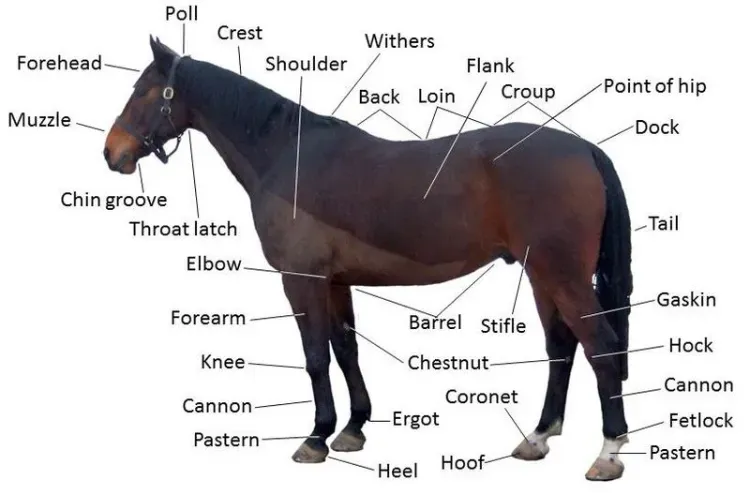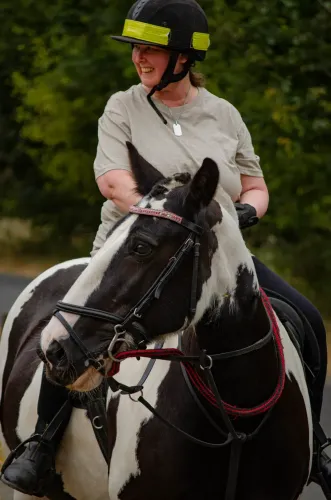
Table of Contents
During my teen years, I rode many different types of horses and ponies, never feeling too heavy for any of these mounts. However, the topic of how much weight horses should carry has become a widely debated issue, with various rules and guidelines used to determine the appropriate load size. Different horse cultures around the world hold contrasting views. In Europe, the 20% rule is commonly upheld as the correct method, whereas in North and South America, horses often carry heavier rider loads.
When considering the weight that horses can comfortably carry, understanding the average horse weight is crucial. So, how much does a horse weigh anyway? Horses typically weigh around 900 to 2,200 pounds, depending on their breed and size. While the 20% rule can serve as a good starting point, it is essential to note that this is just a rough generalization. In this post, we aim to provide clarity and shed light on the rather muddled ideas surrounding horse weight limits, enabling responsible horsemanship and ensuring the well-being of these magnificent creatures.
Try out our FREE horse weight calculator!
We've developed our own calculator for measuring the weight of your horse.
Try our horse weight calculator
Why is a blanket 20% Rider Weight rule incorrect?
The commonly held belief that all horses can carry up to 20% of their body weight is a fallacy
Start with a general premise, “as horse height increases so strength decreases“. This means a Shetland pony will be proportionately stronger than a 17hh warmblood horse. For greater understanding let’s look in more detail using two case studies.
1. Shetland pony weighing 300lbs
A fit Shetland pony with an ideal weight of 300 lbs can carry 25% of its body weight. This means carrying 5 stone 5 lbs or 75lbs of weight.
2. Hanoverian horse weighing 1400lbs
A fit 17hh Hanoverian horse with an ideal weight of 1400 lbs can not carry 25% of its body weight. This would mean carrying 25 stone or 350lbs.
When can I use the 20% Rule for a Rider's Weight?
This rule is correct with some horses and the 1920 US Calvary manual used this as a general guide. The Calvary horses were small at about 15hh with a weight of approximately 1000lbs. The manual stated that for regular work these horses should not carry more than 200lbs (20% of their weight). This was based on using horses in military campaigns and knowing the effects of increased weight in relation to fatigue and athletic ability.
Arabs are Stronger
As if by contradiction Arabian horses are stronger and can carry more than 20% of their body weight. Endurance rides held in the 1920s by the US Calvary illustrated the strength of Arabian horses. Modern-day results from the Tevis Cup 100-mile endurance ride regularly substantiate these findings.
This leaves people with Mixed Messages rather than giving Answers
All horses are different and no simple rule can be applied. Look at four areas of conformation to assess strength, but remember that horses should be considered when they are in fit condition, and we are looking for good strength for body mass.
The 4 good things to consider when Assessing a Horses Strength

Use this diagram if you need to identify any parts of the horse mentioned in this section.
- The ratio of cannon bone circumference to overall body weight. This always becomes smaller with increased height. So bigger horses have smaller legs for their frames than ponies.
- Length of the loins. This is the distance between the last full rib and the croup and if this is shorter there will be more strength.
- Wide loins make greater strength.
- Long muscular forearms and gaskins make for strength.
Calculating a horse’s Strength to Weight ratio
It has to be the responsibility of the owner to make a decision on how much weight their horse can carry. The information given below can only be considered as a generalisation and if you have any concerns expect your horse to carry less weight. The weight to be carried is a combination of both the rider and the saddle used.
Sensible % Weights for Horses to Carry
- Warmblood horses over 17hh can carry about 18% of their body weight.
- Small horses can typically carry about 20% of their body weight.
- Typical Arabian horses can easily carry about 22% of their body weight.
Two important considerations for your horses rider weight strength!
A slim horse with a well-fitting saddle will carry the rider's weight the easiest.
Conclusions
Well, the conclusion is that all horses and ponies are different and have different strengths. Height, conformation and frame size are the controlling factors, however, the type of activity also has a bearing on the amount of weight your horse can carry. Sustained galloping and jumping require the lightest rider weights, while quiet hacking is less taxing on your horse, which means it will be easier for it to carry a little more weight. Never expect your horse to labour under too heavy a load and look at the way your horse is moving to assess whether it is up to the weight you expect it to carry.

Article Suggestion
Think you are Too Heavy to Ride Horses?
